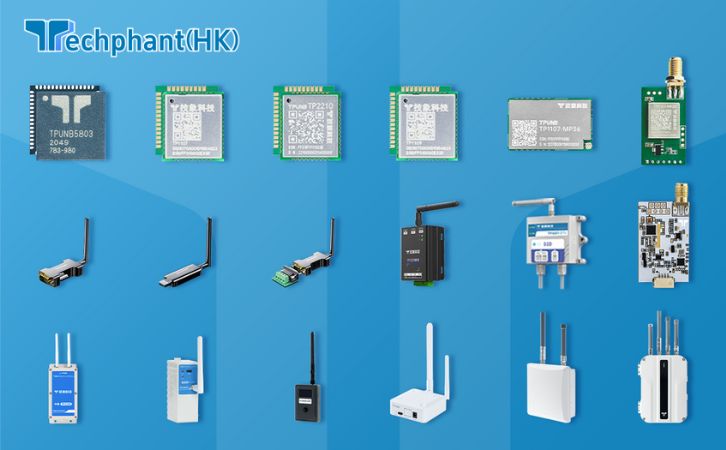The integration of big data and analytics into firefighting has transformed how fires are predicted, detected, and managed, enabling smarter, more proactive strategies. By leveraging data from IoT sensors, satellite imagery, weather systems, and social media, big data analytics provides actionable insights for fire prevention, real-time response, and post-incident analysis. These technologies, supported by advanced algorithms and cloud computing, empower firefighters, urban planners, and emergency services to mitigate risks and save lives. This article examines the role of big data and analytics in smart firefighting, exploring their technical foundations, applications, challenges, and future directions.
I. Technical Foundations of Big Data in Firefighting
Big data analytics for firefighting relies on diverse data sources and sophisticated processing frameworks. IoT sensors, such as smoke, heat, and CO detectors (e.g., Sensirion SHT40), generate continuous streams of environmental data, transmitted via low-power protocols like LoRaWAN or NB-IoT. LoRaWAN, operating in sub-GHz bands (e.g., 868 MHz in Europe), supports long-range communication (up to 15 km) with low power consumption, enabling sensors to operate for 5–10 years on a single battery, consuming less than 10 µA in sleep mode. Satellite imagery, such as from NASA’s MODIS, provides high-resolution data on fire hotspots, while weather systems supply real-time data on temperature, humidity, and wind speed.
Data is aggregated by Customer Premises Equipment (CPE) or gateways using protocols like MQTT, which publishes sensor data to cloud platforms (e.g., AWS IoT Core) for analysis. Big data frameworks, such as Apache Hadoop or Spark, process petabytes of data, leveraging distributed computing to handle high-velocity streams. Machine learning (ML) algorithms, like random forests or neural networks, analyze patterns to predict fire risks or detect anomalies. For example, an ML model might correlate temperature spikes with historical fire data to issue alerts. Edge computing on gateways enables real-time analytics, reducing latency by processing data locally before cloud transmission. Security measures, including TLS for MQTT and AES-128 for LoRaWAN, protect data integrity, though they increase computational overhead.
II. Applications in Fire Prevention and Response
Big data and analytics enable a range of firefighting applications, from prevention to real-time response. In fire prevention, predictive models analyze historical and real-time data to identify high-risk areas. For instance, California’s Fire Risk Analysis uses satellite and IoT sensor data to predict wildfire probabilities, integrating weather patterns and vegetation dryness to prioritize resource allocation. In smart cities, IoT sensors in buildings monitor fire indicators, with analytics platforms like Microsoft Azure IoT processing data to trigger automated responses, such as sprinklers or alarms, within seconds.
During fire response, big data enhances situational awareness. Real-time analytics from drone feeds, thermal cameras, and IoT sensors provide firefighters with dynamic fire spread models. For example, a 5G-connected CPE might stream video from drones to a command center, where ML algorithms map fire perimeters, achieving latency as low as 1 ms. Social media analytics, using natural language processing (NLP), monitor platforms like X for reports of smoke or fires, enabling faster detection in urban areas. Post-incident, big data supports forensic analysis, with platforms analyzing sensor logs and satellite imagery to determine fire causes, informing urban planning and building codes. These applications highlight the power of big data in enabling proactive and responsive firefighting strategies.
III. Advantages of Big Data and Analytics
Big data and analytics offer significant advantages for firefighting. Predictive accuracy is a key benefit, with ML models achieving up to 90% accuracy in forecasting fire risks by analyzing diverse datasets, reducing false positives compared to traditional methods. Real-time processing enables rapid response; for instance, IoT sensor data processed on edge gateways can trigger alerts within seconds, compared to minutes for manual systems. Scalability is another advantage, with cloud platforms handling millions of data points from thousands of sensors, ideal for large-scale deployments like smart cities or national parks.
Integration with other systems enhances coordination. Analytics platforms can interface with BMS for automated responses or with emergency services for optimized dispatch. For example, a smart building might use MQTT to relay fire alerts to a fire department’s system, streamlining response. Cost efficiency is improved through predictive maintenance, identifying sensor faults before failures, and resource optimization, such as deploying firefighters only to high-risk areas. Public engagement is also enhanced, with analytics-driven apps providing real-time fire alerts to residents, increasing community resilience. These benefits make big data a cornerstone of modern firefighting.
IV. Challenges and Limitations
Despite their potential, big data and analytics for firefighting face several challenges. Data quality is critical; inaccurate sensor readings or incomplete satellite imagery can lead to false predictions, requiring robust calibration and data cleaning. For example, dust on a smoke sensor might trigger a false alarm, necessitating ML algorithms to filter noise. Data integration is complex, as sources like IoT sensors, satellites, and social media use different formats and protocols, requiring standardized frameworks like Apache Kafka for interoperability.
Security and privacy are significant concerns. IoT networks are vulnerable to cyberattacks, such as data spoofing, which could disrupt alerts. Implementing encryption like TLS on low-power devices increases energy consumption, potentially reducing battery life by 15–20%. Privacy issues arise from social media analytics, requiring compliance with regulations like GDPR. Computational demands are another challenge; processing petabytes of data requires high-performance infrastructure, which can cost thousands of dollars monthly for cloud services. Finally, accessibility is limited in remote areas with poor connectivity, where NB-IoT or 5G coverage may be unavailable as of June 2025, hindering real-time analytics.
Conclusion
Big data and analytics are revolutionizing firefighting strategies by enabling predictive, real-time, and post-incident solutions. Leveraging IoT sensors, satellite imagery, and ML algorithms, these technologies provide accurate risk assessments, rapid response coordination, and forensic insights, transforming fire prevention and management. Applications in smart cities, wildfire monitoring, and building safety demonstrate their versatility, while advantages like predictive accuracy, scalability, and system integration enhance their impact. However, challenges such as data quality, security, privacy, and infrastructure costs require ongoing innovation in analytics frameworks, cybersecurity, and connectivity solutions. As 5G, AI, and edge computing advance, big data will continue to drive smarter, more effective firefighting strategies, safeguarding communities and ecosystems.



